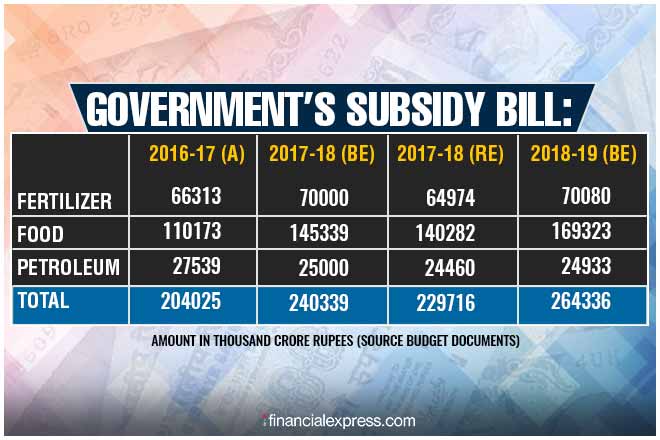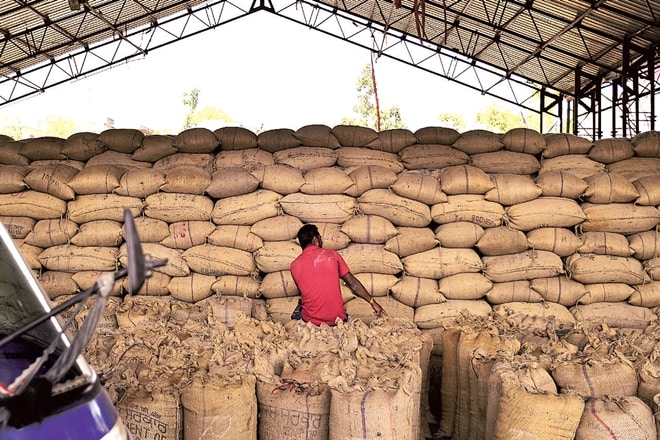Budget 2019: The jury will be out on Friday when Piyush Goyal presents the interim Budget for financial year 2019-20 on how the finance minister manages the government’s subsidy burden. The expectations are high as the Modi government has an impressive record of saving taxpayers’ money by directly transferring benefits to Aadhaar-linked bank accounts.
The government had provisioned Rs 2.64 lakh crore for food, fertiliser and petroleum subsidies in the Budget for the current year, 10% higher than the amount earmarked in the previous fiscal.
While the government managed to bring down the petroleum subsidy by 0.2% to Rs, 24,933 crore last year, the fertiliser subsidy just had a marginal increase to Rs 70,080 crore. The total subsidy bill was higher on account of a 16.5 % rise in food subsidy bill last year. (See table)
While direct transfer helped the government to identify the needy while extending subsidies, it has not been of much help when it comes to reducing the subsidy bill. According to reports, the government is likely to raise the allocation for food subsidy by 6-7% in the interim Budget, taking the total outlay to Rs 1.8 lakh crore. It could be even higher on account of increase in the minimum support price paid to farmers.
Also read: Budget 2019 Live: Litmus test for Modi government as Piyush Goyal goes for the final push
The government’s fuel subsidy bill may not see a rise as the prices of petroleum is expected to be stable around $60 per barrel. The government owned oil marketing companies largely follow the market determined retail prices for petrol and diesel, two most consumed petroleum products. However, a subsidy component is there for cooking gas and kerosene oil. Last year, Budget had allotted Rs 20,377 crore for subsidising domestic cooking gas and Rs 4,555 crore for selling kerosene below cost price.

Prime Minister Modi has often highlighted in his speeches that direct transfer of benefits to Aadhaar linked bank accounts has largely succeeded in weeding out bogus and ineligible beneficiaries resulting in the cumulative saving of Rs 90,000 crore.
In fact, as per the latest data available on the government’s official portal for Direct Transfer of Benefits the cumulative saving figure so far has gone up beyond Rs 1.09 lakh crore which is more than 41% of the government’s total budgeted subsidy bill for this fiscal which is estimated to be over Rs 2.64 lakh crore this year. Ideally, this trend should also reflect in the gross subsidy numbers that are to be given in the interim budget.


